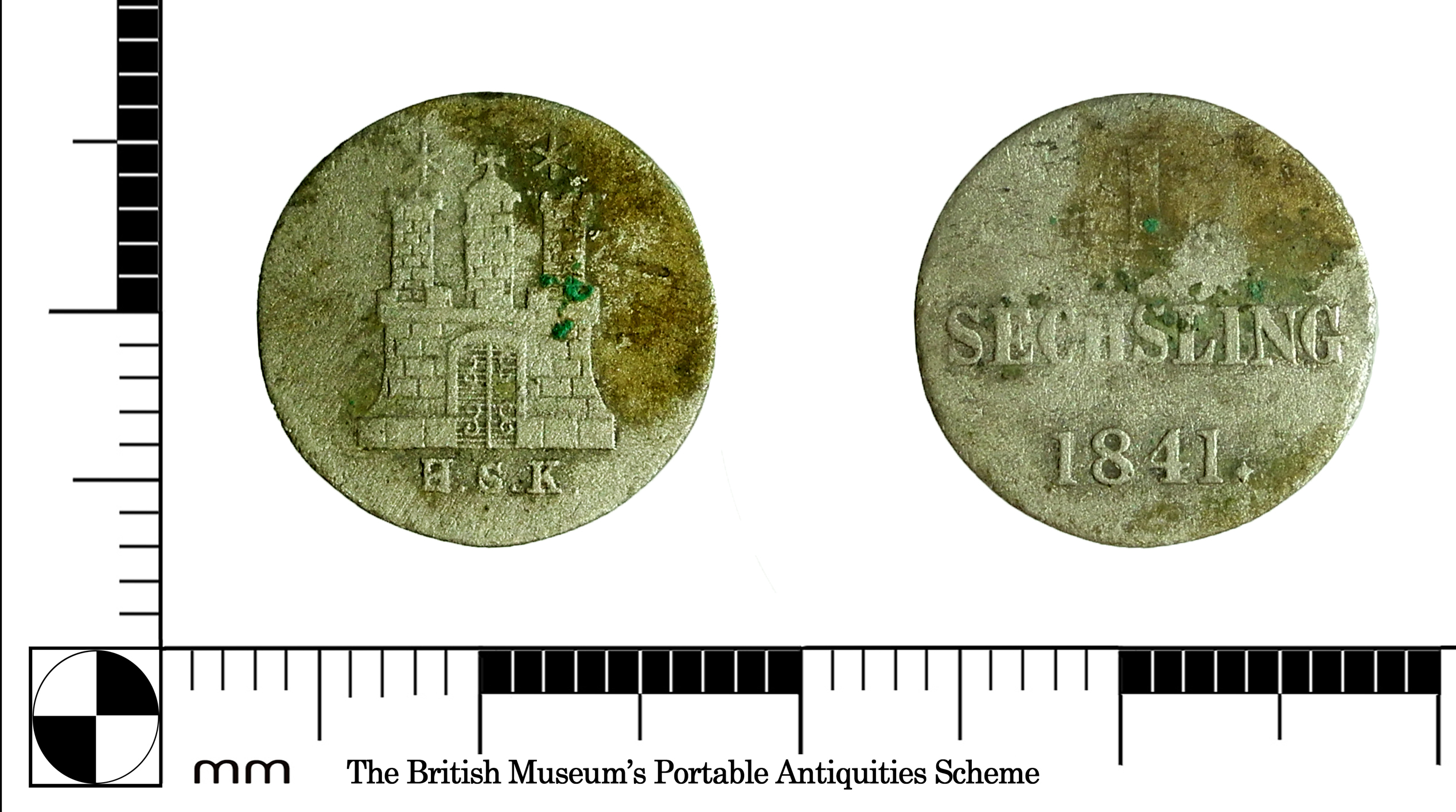Sechsling on:
[Wikipedia]
[Google]
[Amazon]

 The Sechsling, also ''Sößling'', ''Søsling'' (Dan./Norw.) or ''Sechser'', was the name of a type of coin with a value of six ''
The Sechsling, also ''Sößling'', ''Søsling'' (Dan./Norw.) or ''Sechser'', was the name of a type of coin with a value of six ''

 The Sechsling, also ''Sößling'', ''Søsling'' (Dan./Norw.) or ''Sechser'', was the name of a type of coin with a value of six ''
The Sechsling, also ''Sößling'', ''Søsling'' (Dan./Norw.) or ''Sechser'', was the name of a type of coin with a value of six ''Pfennig
The 'pfennig' (; . 'pfennigs' or ; symbol pf or ₰) or penny is a former German coin or note, which was the official currency from the 9th century until the introduction of the euro in 2002. While a valuable coin during the Middle Ages, i ...
s'', representing half a ''Groschen
Groschen (; from la, grossus "thick", via Old Czech ') a (sometimes colloquial) name for various coins, especially a silver coin used in various states of the Holy Roman Empire and other parts of Europe. The word is borrowed from the late Lat ...
'' or half ''Schilling Schilling may refer to:
* Schilling (unit), an historical unit of measurement
* Schilling (coin), the historical European coin
* Austrian schilling, the former currency of Austria
* A. Schilling & Company, an historical West Coast spice firm acquir ...
'' depending on the monetary system.
The ''Sechsling'' was first minted in 1388 by the city of Lübeck
Lübeck (; Low German also ), officially the Hanseatic City of Lübeck (german: Hansestadt Lübeck), is a city in Northern Germany. With around 217,000 inhabitants, Lübeck is the second-largest city on the German Baltic coast and in the stat ...
. With the treaty (''Rezess'') of 1392, the ''Sechsling'' became part of the monetary system within in the Wendish Coinage Union and was thus a so-called 'Union coin' ('' Vereinsmünze''). In addition to Lübeck, it was therefore issued by Hamburg
(male), (female) en, Hamburger(s),
Hamburgian(s)
, timezone1 = Central (CET)
, utc_offset1 = +1
, timezone1_DST = Central (CEST)
, utc_offset1_DST = +2
, postal ...
, Lüneburg
Lüneburg (officially the ''Hanseatic City of Lüneburg'', German: ''Hansestadt Lüneburg'', , Low German ''Lümborg'', Latin ''Luneburgum'' or ''Lunaburgum'', Old High German ''Luneburc'', Old Saxon ''Hliuni'', Polabian ''Glain''), also calle ...
and Wismar
Wismar (; Low German: ''Wismer''), officially the Hanseatic City of Wismar (''Hansestadt Wismar'') is, with around 43,000 inhabitants, the sixth-largest city of the northeastern German state of Mecklenburg-Vorpommern, and the fourth-largest city ...
. Other cities followed.
The ''Sechsling'' was minted until the dissolution of the Wendish Coinage Union after the middle of the 16th century. In the following imperial minting ordinance
Imperial is that which relates to an empire, emperor, or imperialism.
Imperial or The Imperial may also refer to:
Places
United States
* Imperial, California
* Imperial, Missouri
* Imperial, Nebraska
* Imperial, Pennsylvania
* Imperial, T ...
(''Reichsmünzordnung''), which was based on the ''Thaler
A thaler (; also taler, from german: Taler) is one of the large silver coins minted in the states and territories of the Holy Roman Empire and the Habsburg monarchy during the Early Modern period. A ''thaler'' size silver coin has a diameter of ...
'', it was worth ''Thaler''. Hamburg minted the last ''Sechslings'' in 1855 from a billon alloy.
Deriving from the Prussian silver groschen ( ''Thaler''), after the introduction of the imperial Mark in 1871, the equivalent 10 ''Pfennig'' coin was popularly referred to in Germany as a ''Groschen''. In the Berlin dialect, the term ''Sechser'' for half a ''Groschen'' was simply transferred to the 5 ''Pfennig'' coin; this designation is still occasionally heard in relation to the 5 euro cent
There are eight euro coin denominations, ranging from one cent to two euros (the euro is divided into a hundred cents). The coins first came into use in 2002. They have a common Obverse and reverse, reverse, portraying a map of Europe, but each cou ...
coin. Colloquially, some bridges in Berlin are still called ''Sechser'' bridges (''Sechserbrücke'') because the toll for pedestrians was once 6 ''Pfennigs'' or ''groschen''.
See also
* '' Roter Seufzer'', a 6 ''pfennig'' piece from the Leipzig MintReferences
* Wilhelm Jesse: ''Der Wendische Münzverein''. 2nd edition. Brunswick: Klinkhardt & Bärmann, 1967 (reprint of the 1928 Lübeck ed.). {{Groschen Coins of the Holy Roman Empire Pfennig